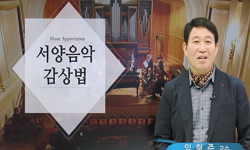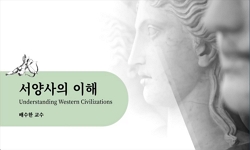The history of double reed instruments starts with an ancient instrument played with double reeds in one or a couple of pipes. The double reeds were called aulos in Greece; they were, halil(very similar to aulos) in Israel and its neighboring areas; d...
http://chineseinput.net/에서 pinyin(병음)방식으로 중국어를 변환할 수 있습니다.
변환된 중국어를 복사하여 사용하시면 됩니다.
- 中文 을 입력하시려면 zhongwen을 입력하시고 space를누르시면됩니다.
- 北京 을 입력하시려면 beijing을 입력하시고 space를 누르시면 됩니다.
동·서양의 겹 리드악기의 발전과 역사적 고찰 = (The) development and historical study through Oriental and Western double reeds
한글로보기https://www.riss.kr/link?id=T9982367
- 저자
-
발행사항
대전 : 충남대학교 교육대학원, 2004
-
학위논문사항
학위논문(석사) -- 충남대학교 교육대학원 , 음악교육전공 , 2004. 8
-
발행연도
2004
-
작성언어
한국어
- 주제어
-
KDC
678 판사항(4)
-
발행국(도시)
대전
-
형태사항
63p. : 삽도 ; 26cm.
-
일반주기명
참고문헌: p. 60-61
-
소장기관
-
0
상세조회 -
0
다운로드
부가정보
다국어 초록 (Multilingual Abstract)
In the Renaissance Age, a shawm, which appeared a double reed instrument in the Middle Ages, was much more popular and developed. Also, it was one of the instruments preferred by people even in the Baroque Period. Particularly, a shawm had a bell making the sound of its tune bigger; the Renaissance shawm was various in size for compass - from soprano to bass. Also, there are a variety of shawms like cromhorn, racket, and rauschfeife, etc. Also they were transformed from shawms and played for many centuries.
In Europe and the Middle East, over several centuries, bagpipes have been developed whose air-bags store air and whose reeds make sound. By the way, bagpipes discovered in some regions have single reed; however, generally most of them have double reed.
As for the European double reed instrument history, various shawm-style instruments had been developed through the Baroque Age; today, they have changed into unique instruments like oboe and bassoon, which play central roles in a modern orchestral music.
The Oriental double reed instruments, almost like shawm popularized in the middle-age Europe, have been handed down until today as a traditional instrument: suona in China, shaenai in India and ryga-gling in Tibet so forth.
Likewise, according to oriental countries, the double reeds have various names and are different in terms of their size and shape; however, they still exist as a unique folk instrument of melody for traditional music in all the countries. Moreover, they are used as an essential folk-music instrument until today. On the other hand, Japanese people play haciriky, like the Korean piri, in their folk music.
Korea has the double reeds such as shaenap and piri; shaenap named taepyungso is similar to shawms in Europe or suona in China and piri without a bell are divided, according to its size, into 3 ones each of which has a different tone: hyangpiri, sepiri, and dangpiri.
The regional traits of each country, the study has concluded, determine the materials of the double reeds; also, the character and emotion of each people are a major source of their shape and mechanism. However, now oriental double reed instruments are limited only to traditional music; there was no improvement in the oriental double reeds whose shape remains old-fashioned.
The history of double reed instruments starts with an ancient instrument played with double reeds in one or a couple of pipes. The double reeds were called aulos in Greece; they were, halil(very similar to aulos) in Israel and its neighboring areas; developed into an instrument, tibia, in Rome.
In the Renaissance Age, a shawm, which appeared a double reed instrument in the Middle Ages, was much more popular and developed. Also, it was one of the instruments preferred by people even in the Baroque Period. Particularly, a shawm had a bell making the sound of its tune bigger; the Renaissance shawm was various in size for compass - from soprano to bass. Also, there are a variety of shawms like cromhorn, racket, and rauschfeife, etc. Also they were transformed from shawms and played for many centuries.
In Europe and the Middle East, over several centuries, bagpipes have been developed whose air-bags store air and whose reeds make sound. By the way, bagpipes discovered in some regions have single reed; however, generally most of them have double reed.
As for the European double reed instrument history, various shawm-style instruments had been developed through the Baroque Age; today, they have changed into unique instruments like oboe and bassoon, which play central roles in a modern orchestral music.
The Oriental double reed instruments, almost like shawm popularized in the middle-age Europe, have been handed down until today as a traditional instrument: suona in China, shaenai in India and ryga-gling in Tibet so forth.
Likewise, according to oriental countries, the double reeds have various names and are different in terms of their size and shape; however, they still exist as a unique folk instrument of melody for traditional music in all the countries. Moreover, they are used as an essential folk-music instrument until today. On the other hand, Japanese people play haciriky, like the Korean piri, in their folk music.
Korea has the double reeds such as shaenap and piri; shaenap named taepyungso is similar to shawms in Europe or suona in China and piri without a bell are divided, according to its size, into 3 ones each of which has a different tone: hyangpiri, sepiri, and dangpiri.
The regional traits of each country, the study has concluded, determine the materials of the double reeds; also, the character and emotion of each people are a major source of their shape and mechanism. However, now oriental double reed instruments are limited only to traditional music; there was no improvement in the oriental double reeds whose shape remains old-fashioned.
목차 (Table of Contents)
- 목차
- Ⅰ. 서론 = 1
- 1. 연구의 필요성 = 1
- 2. 연구 방법 = 2
- 3. 연구의 제한점 = 2
- 목차
- Ⅰ. 서론 = 1
- 1. 연구의 필요성 = 1
- 2. 연구 방법 = 2
- 3. 연구의 제한점 = 2
- Ⅱ. 서양의 겹 리드 악기 = 3
- 1. 리드(Reed) = 3
- 2. 고대의 관악기 = 4
- 1) 고대의 겹 리드 악기 = 4
- (1) 할릴(Halil) = 4
- (2) 아울루스(Aulos) = 6
- (3) 티비아 (Tibia) = 7
- 3. 중세의 관악기 = 8
- 1). 중세의 겹 리드 악기 = 9
- (1) 숌(Shawm) = 9
- ① 유럽 지역의 숌 = 10
- ② 동양 지역의 숌 = 11
- ③ 그 밖 지역의 숌 = 12
- (2) 백 파이프(Bagpipes) = 13
- 4. 르네상스의 관악기 = 15
- 1) 르네상스의 겹 리드악기 = 15
- (1) 숌 = 15
- (2) 크롬 호른(Crum Horn) = 18
- (3) 라켓(Racket) = 19
- (4) 라우쉬파이프(Rauschpfeife) = 20
- (5) 크로타르(Krottare) = 21
- (6) 그 밖의 르네상스 시대의 겹 리드 악기들 = 22
- 5. 바로크의 관악기 = 24
- 1) 바로크의 겸 리드 악기 = 24
- (1) 오보에(Oboe) = 25
- ① 소프라노 오보에(Soprano Oboe) = 26
- ② 오보에 다 모레(Oboe d' amore) = 26
- ③ 오보에 다 카치아(Oboe da caccia) = 28
- ④ 코르 앙글레(Cor Anglais) = 29
- (2) 바순(Bassoon) = 29
- 6. 고전 · 낭만시대의 관악기 = 31
- 1) 고전 시대의 겹 리드 악기 = 31
- (1) 오보에 = 32
- (2) 바순 = 34
- (3) 19세기의 코르 앙글레 = 35
- (4) 헤켈폰(Heckelphone) = 36
- 7. 현대의 관악기 = 36
- 1) 현대의 겹 리드 악기 = 37
- (1) 오보에 = 37
- (2) 잉글리시 혼(English Horn) = 38
- (3) 바순 = 40
- (4) 콘트라바순(Contra Bassoon) = 41
- Ⅲ. 동양의 겹 리드 악기 = 42
- 1. 중국(中國) = 42
- 1) 중국의 관악기(管樂諸) = 42
- 2) 중국의 겹 리드 악기 = 42
- (1) 수오나(Suona) = 43
- (2) 관자(管子) = 44
- (3) 호관(胡管) = 44
- 2. 일본(日本) = 45
- 1) 일본의 관악기 = 45
- (1) 히치리키 (Hichiriki) = 45
- 3. 인도(印度) = 46
- 1) 인도의 관악기 = 46
- (1) 쇄나이(Shehnai) = 47
- 4. 티벳 (Tibet) = 49
- 1) 티및의 관악기 = 49
- (1) 르갸-글링(Ryga-gling) = 49
- Ⅳ. 한국의 겹 리드 악기 = 51
- 1. 한국의 관악기 = 51
- 2. 한국의 겹 리드 악기 = 51
- 1) 향피리 (鄕피리) = 52
- 2) 세피리 (細피리) = 53
- 3) 당피리 (唐피리) = 54
- 4) 태평소 = 56
- Ⅴ. 결론 = 58
- 참고문헌 = 60
- ABSTRACT = 62











